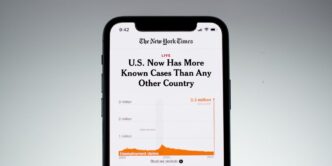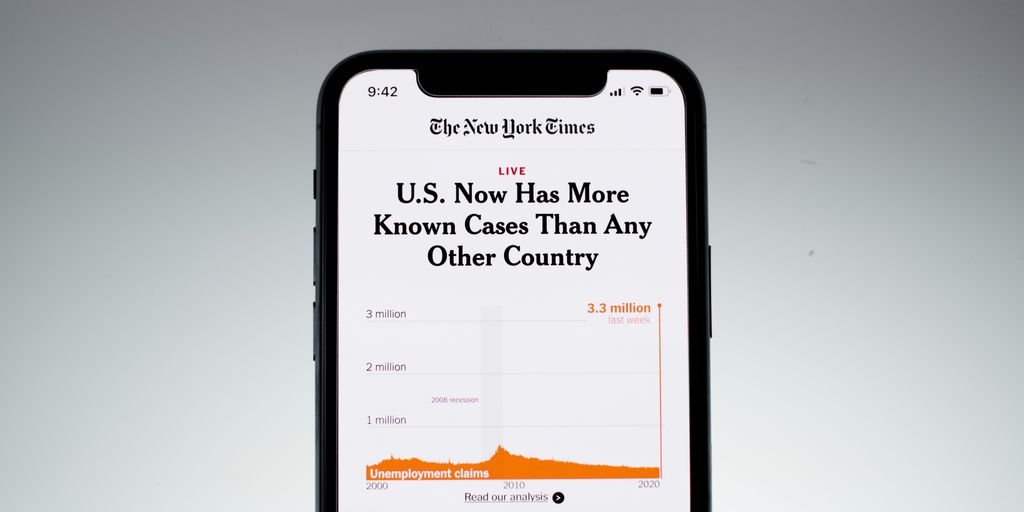It feels like every week there’s a new privacy law popping up in some US state. It’s getting a bit confusing trying to keep track of it all, right? Companies are scrambling to figure out what applies to them and how to actually follow all these rules. The IAPP has been watching this closely, and they’ve got some good insights to help us make sense of this whole mess. We’ll look at how we got here, what the common threads are in these laws, and what resources can actually help businesses stay on the right side of things.
Key Takeaways
- The number of US state privacy laws has grown a lot since 2018, making it harder for businesses to keep up.
- While there are differences, many state privacy laws share common elements, often taking cues from earlier legislation like California’s.
- The IAPP provides useful tools like a tracker and reports to help understand these evolving iapp state privacy laws.
- Businesses need strategies to manage compliance across different state laws, whether by unifying their approach or tailoring it to specific state requirements.
- Recent laws in states like Rhode Island, Minnesota, and Vermont, plus activity around the Kentucky Consumer Privacy Act, show the ongoing changes in this area, with potential for federal action influencing the future.
Understanding the Growth of IAPP State Privacy Laws
It feels like just yesterday we were talking about the California Consumer Privacy Act (CCPA) as this big, new thing. Now, looking back, it was really the start of something much bigger. The IAPP has been tracking this stuff closely, and the numbers really show how much things have changed. Back in 2018, it was mostly just California making waves. But then, things started picking up speed. By 2022, lawmakers in nearly 30 states, plus Washington D.C., were either introducing new privacy bills or had existing ones still in play from the year before. It was a lot to keep up with, honestly.
Historical Context of State Privacy Legislation
Before the CCPA, state-level privacy laws were pretty scattered. You had things like data breach notification laws, which are important, sure, but they didn’t really give consumers much control over their personal information. The CCPA changed the game by giving people rights like knowing what data companies have, asking for it to be deleted, and opting out of its sale. This set a precedent, and other states started looking at it, often using it as a template. It’s like when one person tries a new recipe and everyone else wants to try it too.
Tracking the Expansion of US State Privacy Initiatives
Since 2018, the growth in state privacy legislation has been pretty remarkable. The IAPP’s own resources, like the US State Privacy Legislation Tracker, show this clearly. They only include bills that aim to be comprehensive, meaning they cover a broad range of data and consumer rights, not just narrow, industry-specific rules. This focus helps us see the real trend towards broader privacy protections. It’s not just about a few states anymore; it’s becoming a nationwide conversation, even if the specifics vary from place to place.
The Impact of Rapid Legislative Growth
This quick expansion means businesses are facing a complex web of rules. While many of these new state laws share common ground, like giving consumers access and deletion rights, the differences can still create headaches. It’s not quite the free-for-all some might fear, as many bills borrow from existing ones, but staying on top of each state’s unique requirements is a big job. This rapid pace means companies really need to pay attention to how these laws are being put into practice, especially when it comes to enforcement actions taken by state attorneys general.
Navigating the Patchwork of US State Privacy Laws
It can feel like every other week a new state is jumping into the privacy law game. It’s a lot to keep up with, right? But here’s the thing: while it might look like a total mess of different rules, there are actually some common threads running through most of these new state privacy bills. Think of it less like a chaotic jumble and more like a set of variations on a theme. Many of these laws are taking cues from earlier ones, particularly the California Consumer Privacy Act (CCPA) and the Washington Privacy Act. This means there’s a foundation we can build on.
Common Denominators in State Privacy Bills
Even with all the different state names on the laws, you’ll see a lot of the same ideas popping up. Most of these bills are trying to give people more control over their personal information. This usually shows up in a few key areas:
- Consumer Rights: Most laws grant individuals rights like knowing what data a company has on them, asking for that data to be deleted, or opting out of the sale of their personal information. Some even give you the right to correct inaccurate data.
- Business Obligations: Companies generally have to be more transparent about how they collect and use data. They also need to put security measures in place to protect that data and often have to conduct data protection assessments for certain high-risk processing activities.
- Scope and Applicability: These laws typically apply to businesses that meet certain thresholds, like a minimum amount of revenue or a certain volume of personal data processed. They also usually have exemptions for things like non-profits or government entities.
Learning from Diverse State Approaches
While the core ideas are similar, each state puts its own spin on things. Some laws might have broader definitions of what counts as ‘personal information,’ while others might have stricter rules about data sales or targeted advertising. For example, some states have specific requirements for how businesses must respond to consumer requests, setting shorter or longer timelines than others. It’s like looking at different recipes for the same dish – the ingredients are mostly the same, but the final flavor can vary.
Strategies for Unified Compliance
So, how do you deal with all this? Trying to create a separate compliance plan for every single state law would be a nightmare. The smart move is to aim for a baseline of compliance that meets the strictest requirements. If you can do that, you’ll likely be covered for most of the other states too. Think about building a system that can handle the most demanding requests and policies, and then you can adjust it as needed for states with less stringent rules. It’s about finding efficiencies so you’re not reinventing the wheel every time a new law pops up. Focusing on a strong, adaptable privacy program is key to managing this evolving landscape.
Key Resources for IAPP State Privacy Laws
Keeping up with all the new state privacy laws can feel like trying to catch lightning in a bottle, right? It’s a lot. Luckily, the IAPP has put together some really helpful tools to make sense of it all. They’re like your trusty guide in this ever-changing privacy world.
The US State Privacy Legislation Tracker
This is a big one. The IAPP keeps a close eye on all the comprehensive privacy bills being proposed and passed across the US. Think of it as a live scoreboard for state privacy laws. It only includes laws that are meant to be broad, covering how personal information is handled. It’s updated regularly, so you’re not looking at old news. You can find charts, maps, and even a directory that breaks down what each state has enacted. If you spot a bill they missed, you can even let them know. It’s a community effort, really.
Comprehensive State Law Reports
Beyond just tracking, the IAPP also puts out detailed reports. These go deeper into what each law actually means for businesses. They help explain the common threads that seem to be showing up in these laws, even though each state does its own thing. It’s good to know that while there are differences, many of these laws are borrowing ideas from each other, like California’s CCPA or Washington’s Privacy Act. This makes it a bit easier to find common ground for compliance.
State Privacy Law Maps and Charts
Sometimes, seeing is believing. The IAPP offers visual tools like maps and charts that lay out the privacy landscape state by state. This can be super useful for quickly seeing which states have laws in effect, which ones are coming up, and maybe even how strict they are. It helps you get a bird’s-eye view of the whole situation without having to read through dozens of individual bills. It’s a great way to start figuring out where to focus your attention first.
Best Practices for Evolving IAPP State Privacy Laws

It feels like every week there’s a new state privacy law popping up, and honestly, keeping track of it all can be a real headache. But here’s the thing: while it might seem like a chaotic mess, there are actually some common threads running through these laws. Many of them are taking cues from earlier legislation, like California’s CCPA/CPRA or Washington’s Privacy Act. This means that if you focus on the core requirements, you can build a solid foundation for compliance that covers a lot of ground.
So, how do you actually manage this evolving landscape without losing your mind? It really comes down to a few key strategies:
- Identify the common ground: Look for the shared principles across the laws. Things like consumer rights (access, deletion, correction), data minimization, and transparency are pretty standard. Focusing on these core elements can help you build a unified approach.
- Map your data: You can’t comply if you don’t know what data you have, where it is, and why you have it. Getting a clear picture of your data flows is step one. This helps you see where different state laws might apply and what specific actions you need to take.
- Build flexible systems: Instead of creating separate processes for each state, aim for systems that can adapt. Think about your consent management, data subject request handling, and security measures. Can they be configured to meet the strictest requirements, or at least be easily adjusted as new laws come into play?
- Stay informed: This is a big one. Keep an eye on the IAPP’s resources, like their state law tracker. Knowing what’s new and what’s changing is half the battle. It’s like checking the weather before you head out – you need to know what to expect.
Ultimately, the goal is to create a privacy program that’s robust enough to handle the current requirements and adaptable enough to grow with future legislation. It’s not about chasing every single nuance of every single law, but about building a strong, adaptable framework that respects consumer privacy across the board. It might take some effort upfront, but it’s way better than trying to patch things up later when a new law hits.
Analyzing Recent Developments in IAPP State Privacy Laws
It feels like every week there’s a new state privacy law popping up, and honestly, keeping track of it all can be a bit much. But that’s why we’re here, right? To break down what’s happening. Recently, we’ve seen some interesting moves that are definitely worth talking about.
Rhode Island’s Entry into the Privacy Landscape
Rhode Island became the latest state to pass a comprehensive privacy law, joining the growing ranks of states with their own data protection rules. This new legislation adds another layer to the already complex US privacy map. It’s important for businesses to understand how this law fits in with others they might already be complying with.
Minnesota and Vermont’s New Privacy Legislation
Both Minnesota and Vermont have also stepped into the privacy arena with new laws. These developments highlight a continuing trend where states are looking to give consumers more control over their personal data. Each law has its own specifics, so it’s not just a matter of checking a box; you really need to look at the details for each one.
Exploring the Kentucky Consumer Privacy Act
The Kentucky Consumer Privacy Act (KCPA) is another recent addition that’s getting attention. Like other state laws, it grants consumers certain rights regarding their data. Understanding the scope and requirements of the KCPA is key for any business operating in or targeting consumers in Kentucky. It’s a good example of how these laws, while sharing common themes, can have unique provisions that require careful attention.
The Future of US State Privacy Legislation
It feels like every other week, another state is jumping into the privacy law game. We’ve seen a real surge in these laws popping up across the country, and honestly, it can be a lot to keep track of. Companies are trying to figure out how to handle all these different rules, and it makes you wonder what’s next.
The Potential for a Federal Privacy Bill
There’s been a lot of talk, and frankly, a lot of hope, about a federal privacy law. The idea is that one big law from Washington could simplify things for everyone. Instead of trying to make sense of, say, California’s rules one day and Colorado’s the next, a federal standard could provide a baseline. Think of it like having one set of traffic laws for the whole country instead of different ones in every state. It could make compliance way less of a headache.
How Federal Legislation Could Shape State Laws
If a federal privacy bill does pass, it’s likely to change how state laws develop. Many states have been looking at laws like the California Consumer Privacy Act (CCPA) or the Washington Privacy Act as models. A federal law might set a minimum standard that states would have to meet or exceed. Some states might decide their current laws are good enough, while others might update theirs to align with the federal requirements. It could lead to more consistency, but there’s also a chance states will still want to add their own unique touches.
Anticipating Future State Privacy Trends
Looking ahead, we can probably expect more states to introduce their own privacy legislation. It’s becoming a trend, and once a few states pass laws, others often follow. We might see more states focusing on specific areas, like children’s privacy or data security. It’s also possible that states will start to borrow more heavily from each other, leading to a more unified, though still varied, approach. Keeping an eye on what’s happening in states like Rhode Island, Minnesota, Vermont, and Kentucky gives us a good idea of where things are headed. It’s a dynamic situation, and staying informed is key.
Wrapping Up the State Privacy Puzzle
So, as we’ve seen, the whole state privacy law thing in the US is really picking up speed. It felt like just yesterday we were only talking about California, but now, pretty much every state is getting in on it. The IAPP has been tracking this like crazy, and it’s clear that while it might seem like a total mess of different rules, there’s actually a lot of overlap. Many states are looking at laws like California’s or Washington’s as a starting point. This means that while you still need to pay attention to the specifics for each state, there are common threads you can build your compliance strategy around. It’s not as scary as it sounds, but it definitely requires staying informed and adaptable. Keep an eye on those trackers and resources; they’re your best bet for keeping up.
Frequently Asked Questions
Why are so many US states making new privacy laws?
Think of it like this: a few years ago, hardly any states had rules about how companies could use your personal information online. But now, many states are creating their own laws. It’s like a wave of new rules that started around 2018 and has been growing bigger and bigger each year.
Is it hard for companies to follow all these different state privacy laws?
It can be tricky because each state might have slightly different rules. Imagine trying to follow instructions from ten different people – it can get confusing! However, many of these new laws are pretty similar to each other, often looking to laws from states like California for ideas. So, while it seems like a lot, there are common threads that can help businesses figure out what to do.
Where can I find reliable information about these state privacy laws?
The IAPP (International Association of Privacy Professionals) has tools like a ‘US State Privacy Legislation Tracker.’ This is like a map that shows all the states that have passed or are thinking about passing these privacy laws. They also have reports and charts that explain what these laws mean.
How can businesses make sure they are following all the privacy rules correctly?
Companies should try to understand the rules in each state where they do business. Some might choose to follow the strictest rules from any state to make sure they are covered everywhere. Others might create one set of rules that works for most states, making sure they meet the common requirements.
Are there any new states that have recently passed privacy laws?
Yes, recently Rhode Island passed a new privacy law, and states like Minnesota and Vermont have also introduced their own. Kentucky also has a new law called the Kentucky Consumer Privacy Act. These are all examples of states updating their rules to protect people’s information.
Could there be a single privacy law for the whole US someday?
Some people wonder if the US will get one big, nationwide privacy law, like some other countries have. If that happens, it could make things simpler for companies and might even influence what new laws the states create in the future. It’s something everyone is watching closely.












